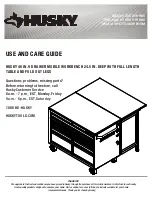
76
Supercapacitor Fault Conditions and Precautions
If a Supercapacitor leaks, gives off a bad odor, generates heat, becomes discolored or
deformed, or in any way appears abnormal during use, recharging or storage,
immediately remove it from the system and stop using it. Here are some of the
conditions that might trigger Supercapacitor fault.
The temperature sensor on the system’s charger circuit reports a temperature reading
exceeding the pre-set threshold. The charger circuits will enter a low-power and self-
protection state.
A Supercapacitor module has been charged for more than 10 minutes.
A timer is embedded with the charger. When this occurs, the charger will enter a timer fault
state. Charging will resume automatically after you remove/re-install the Supercapacitor
module or reset the system.
Follow these precautions when you install the Supercapacitor.
Use the replacement Supercapacitor supplied by your distributor. Use of capacitors provided
otherwise will void your warranty.
Dispose of used Supercapacitor at authorized battery disposal sites only.
Do not place a Supercapacitor near a heat source.
Do not immerse the Supercapacitor in water or expose it to other forms of liquids.
Do not disassemble or modify the Supercapacitor.
Do not pierce the Supercapacitor with a sharp object, strike it with a hammer, exert
pressure on it, or throw it.
Replacing the Supercapacitor
To replace the Supercapacitor, follow these steps:
1.
R
emove the controller module (refer to Replacing the Controller Module).
2.
Loosen the
thumb screw (1
)
at the end of the Supercapacitor.
3.
Lift the Supercapacitor from the screw end at 45 degree angle and insert the replacement
Supercapacitor also at a 45 degree angle. Make sure the
protrusion
(
2
)
meets at the front
and the
connector (3)
of Supercapacitor and charge board match. Secure the Supercapacitor
with
the thumb screw (1)
once it is in place.
4.
Reinstall the controller.
















































